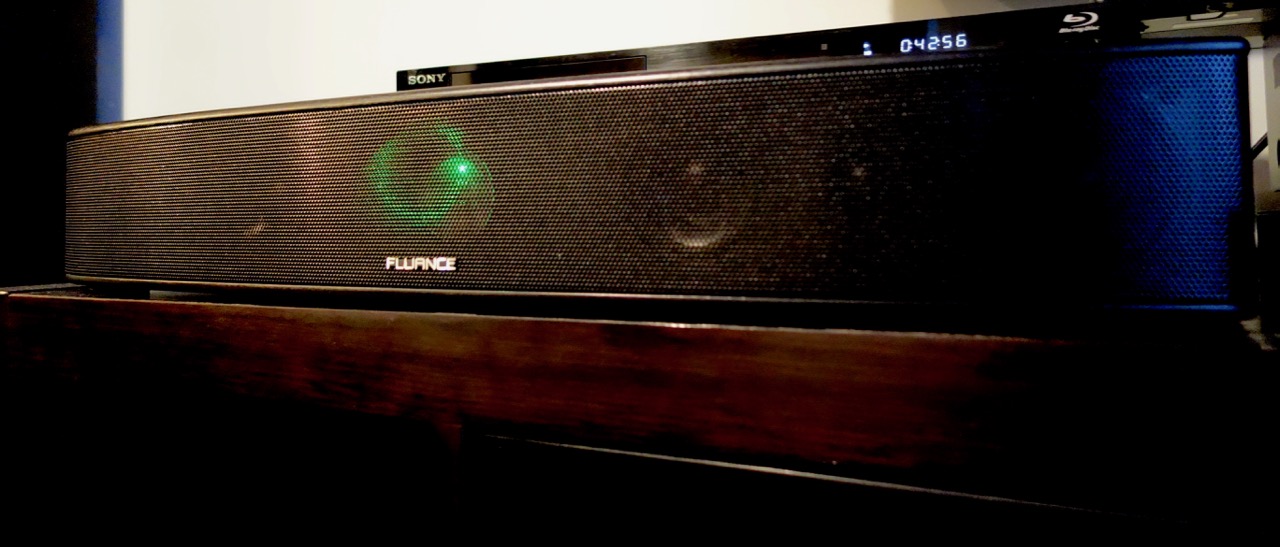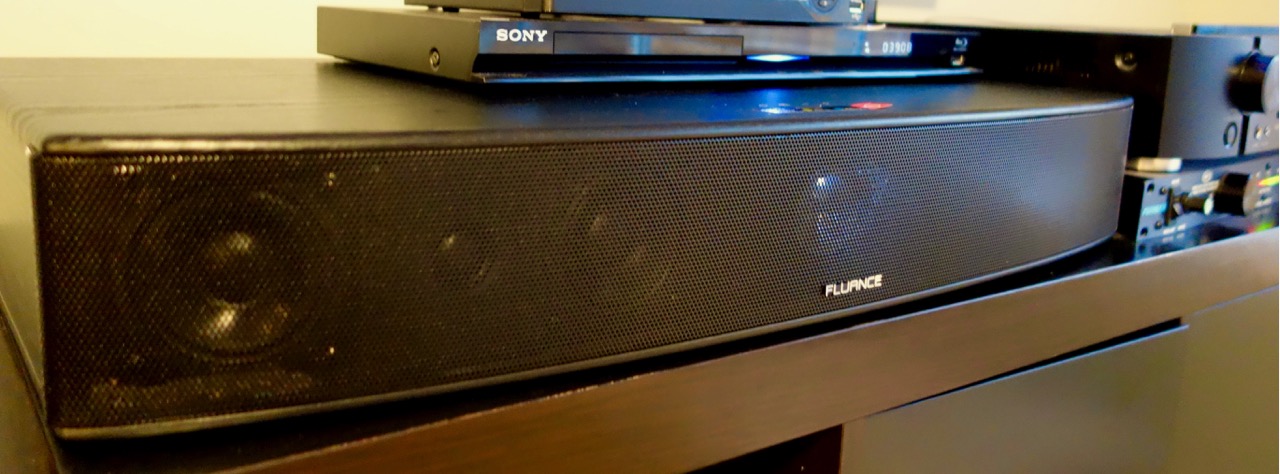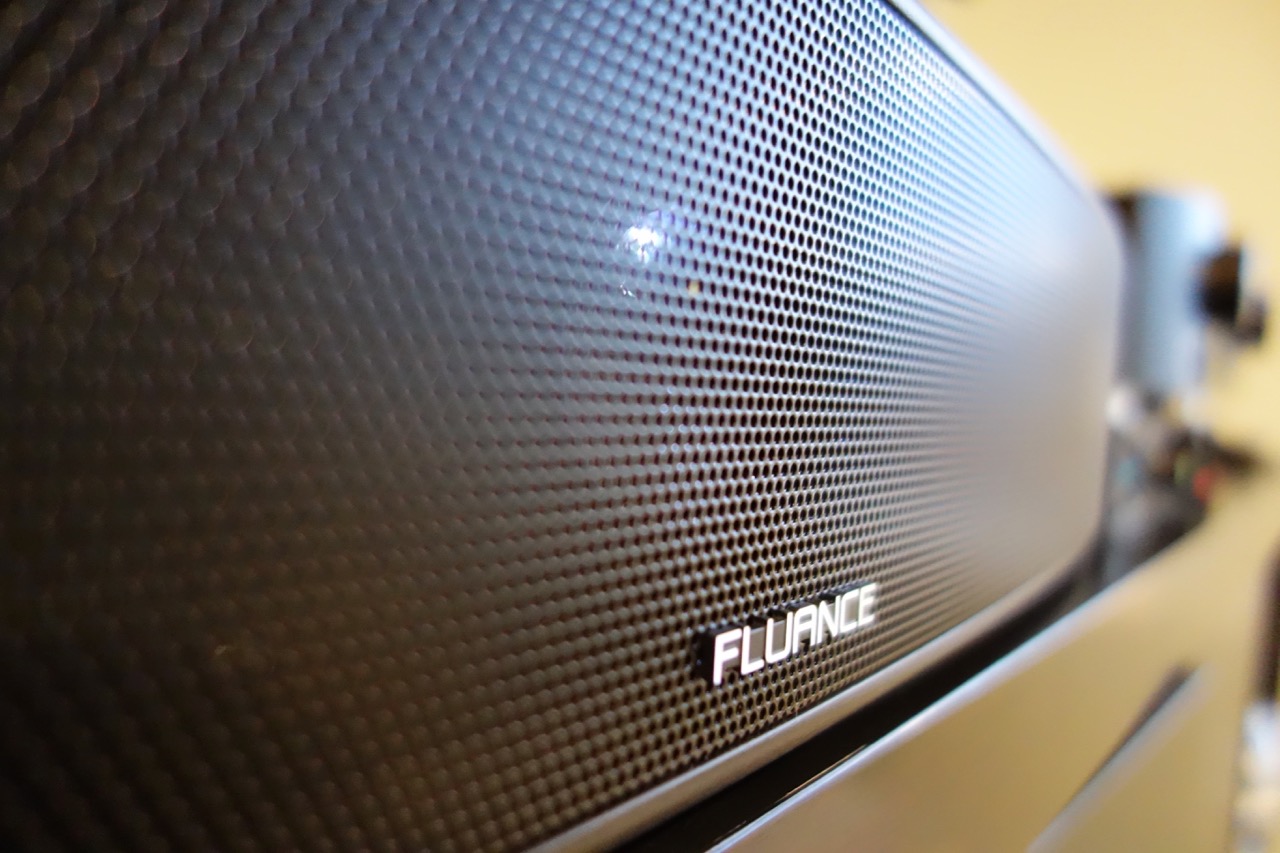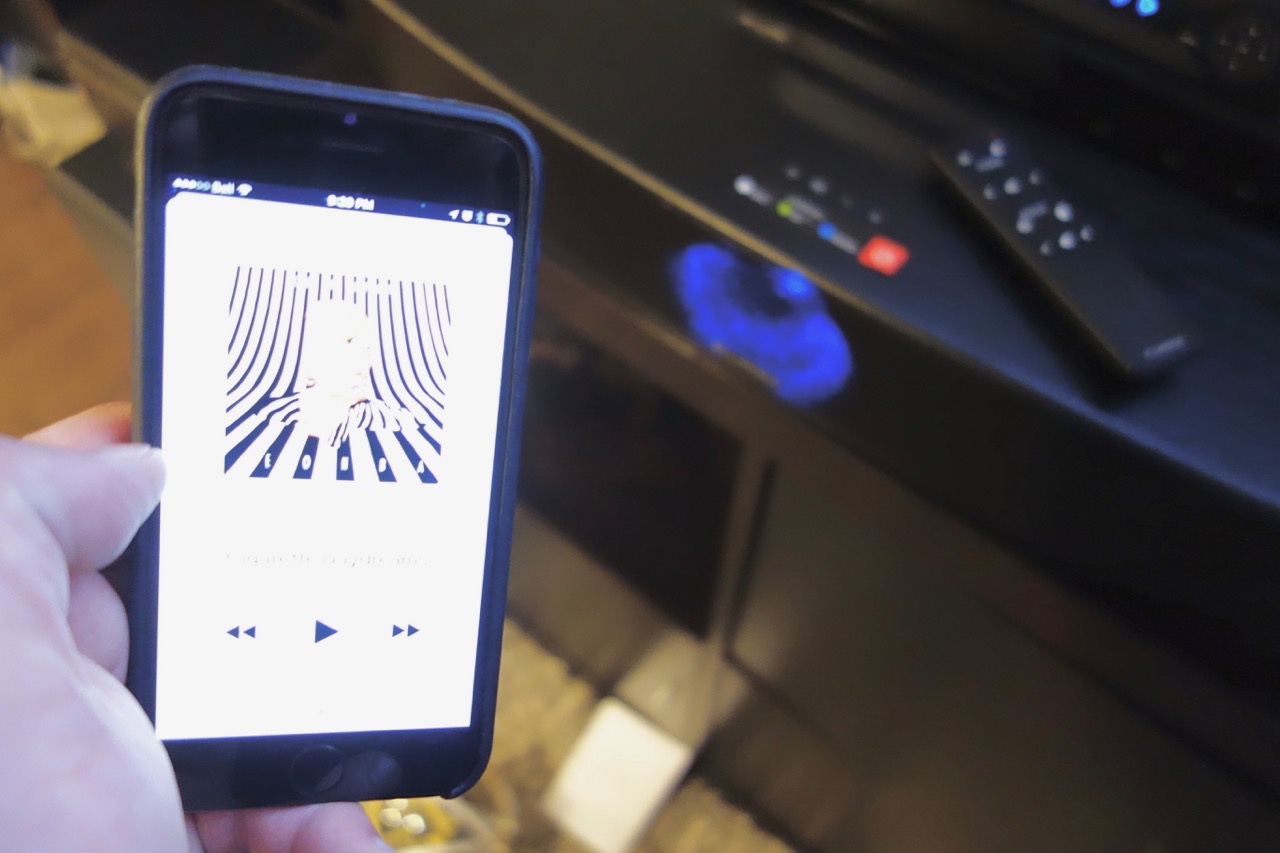
Since its inception in 1999, Fluance has carved out a niche for producing high-value speakers with excellent sound quality. They have received a fair number of nods from well-regarded audio reviews confirming this position in the market. The AB40 High Performance Soundbase speaker system is the first sound bar offering from the Canadian manufacturer, and it’s available at Best Buy. It comes advertised as an audiophile quality speaker system, without all of the usual audiophile nuisances like amplifiers, wires, and actual speaker cabinets. On paper this seems like it could a perfect solution for consumers looking for a surround sound solution in a compact sound bar.
Fluance Soundbase recreates surround sound?
I have long been a skeptic of the “single sound bar can produce surround sound” crowd. The physics of audio just don’t allow for this to be the case. There are too many variables that would make that impossible to execute in every scenario. If the room isn’t perfectly rectangular, if the main listening position isn’t perfectly positioned in the room, if there is more than one listening position. All of these will impact the practicality of this claim made by Fluance.

Does the AB40 come with a subwoofer?
The other claim Fluance makes that I am looking forward to either confirming or debunking is the ability to reproduce low-end frequencies to 30 Hz. Typically, this is a feat that only a subwoofer or very high end floor standing speaker could achieve. Fluance suggests they can do this by using psychoacoustics, the perception of sound, as opposed to actually producing the sound with the speaker, negating the need for a separate sub. I’ll admit, this is a very new concept for me. That said, I find it easier to believe that a speaker could make me believe I’m hearing 30 Hz, than I could that a 3” driver in a compact sound bar could create it.
How does the Soundbase work?

Fluance has equipped the AB40 to ensure it appeals to a very wide audience. It houses six drivers, consisting of four 3” aluminum cones, and two 2” silk dome tweeters. Two of the 3” drivers are mounted at a 35 degree angle to allow for the surround feature, noted as 3D on the supplied remote, to sonically take shape. Adding to the appeal of a single speaker home theatre system, there is Bluetooth connectivity allowing you to wirelessly stream from your favourite music services such as Spotify, Pandora, or iTunes from your phone or iPad.
The Fluance Soundbase represents a departure from your typical “sound bar.” The unit has some depth, and would need to sit on a shelf, or some sort of stand to support its size. The inputs are very straightforward; there is a digital optical input, a 3.5 mm jack, and the wireless Bluetooth option as well.
Break your speakers in!
There is a universal truth in speakers: the drivers need some time to flex, and to work themselves into a state where they can best reproduce sound. This is called a break-in period. On larger speakers it can take upwards of 200 hours. The Soundbase calls for a minimum of 10 hours, or one binged season of your favourite show. After that break-in period is complete, you can confidently push the speaker and expect it to sound its best. To ensure I maximized my listening, I let the AB40 break in for 20 hours over a couple of days of playing music at moderate volume.
Setting it up is super easy
Right out of the box, there is little to complain about. The metal grill is smooth and hugs the curvature of the front of the box. It took me less than 10 minutes to get the Soundbase setup, including getting it powered up, and connected to my TV.
How did the Fluance Soundbase perform?
The first thing I noticed when I turned it on was the LED light in the centre of the speaker. What a shame. I really don’t understand why manufacturers insist on using bright lights on electronics that are primarily designed to use in low-light environments. Fluance takes this annoyance to the next level by putting the light behind the metal grill, which diffuses the light; creating a circle that appears larger the closer you are to it. The light changes colour depending on the input you have selected, which is the only visual cue to indicate which input you are currently hearing. Another issue I had was that there was no way to tell when you had the bass boost or 3D feature on.
From a sound perspective, first and foremost, I will say that this is a massive upgrade from the speakers you would find in any flat screen TV. When comparing the AB40 to the speakers on my Samsung TV, the difference is compelling. There is fullness to the audio that my TV could never achieve, and is far superior to other sound bars I’ve experienced. In general listening terms, the High Performance Soundbase made a very good first impression.
Watching a movie with a surround track was the first true test I put the AB40 through. For this, I chose a Blu-ray with an undeniable surround presence: Roger Waters The Wall. Like all comparison speaker auditions, I started with the lesser setup to give it the opportunity to impress. I didn’t experience the surround effect, even with the 3D setting turned on which is supposed to widen the soundstage. In fact, with my listening room being an open concept, I completely lost half of the audio to the open space. When I flipped back to my true surround system, it was a completely different experience.

Listening to music provided a similar experience. While it sounds good, the inherent nature of a sound bar means the stereo field doesn’t exist. The drivers are too close together to separate the left and right channel. In a smaller room, with the 3D setting on, it may be possible to detect, but my room proved a challenge. Within the range the AB40 is meant to excel, this speaker provides great value.
How about that psychoacoustic bass?
The claim is that the Fluance can make you believe you are hearing a 30 Hz wave, a very low frequency. We’re told the speakers themselves don’t generate the sound, but they make you believe you are hearing it using psychoacoustics. I will give the AB40 this: I was surprised at the range I was getting in the low end, it was more than I ever thought it could be. That said, it wasn’t presented with the same force as the rest of the range, and didn’t balance the audio the way a sub or full range speaker would, even with the bass boost running.
While it is reassuring that my preconceptions held about this speaker held up on the surround and bass fronts, I readily admit to being impressed with the abilities the speaker did display. I cannot fault them for failing to overcome the laws of physics, perhaps only for advertising that it could be so easily done. For a sound bar solution, that is super quick and easy to setup, that doesn’t take up a lot of space or require any special tweaking, Fluance should be credited for creating a really solid product here.
I would have no problem recommending the Fluance AB40 High Performance Soundbase to anyone looking at investing in a sound bar. It really does perform at a high level, particularly at the price point. Keep in mind that if you are hoping this will replicate a genuine surround sound system, you may be disappointed. However, if you are using this as it should be intended, as an enhanced audio system for your TV, you are going enjoy every minute.
You can find the Fluance AB40 Soundbase at Best Buy.



